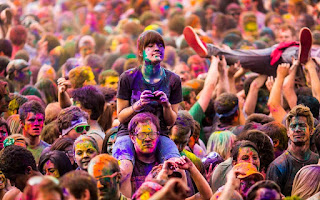Cordoba Mosque of Islamic art in Andalusia
The Arab and Islamic presence had many heart-stopping monuments that still bear witness to the greatness of Arab civilization in Andalusia, and among those achievements is the Mosque of Cordoba.
Its building the place and date
Medieval Córdoba, with the Great Mosque at its center, was a place where cultures and civilizations met and intertwined.
The Cordoba Mosque was built in the style of the Umayyad Mosque in Damascus, it consists of a campus 73.5 meters wide and 36.8 meters deep, divided into 11 galleries, by 10 rows of arches, Each of them includes 12 arches standing on marble pillars and vertically extending on the back wall, following the rules of Morisco architecture in terms of the presence of 4 gardens in the courtyard of the building called Riyadh, and geometric motifs and arabesques made of wood and stucco.
 |
| Cordoba Mosque from the inside |
The Cordoba Mosque is the most famous of the Morisco monuments (the architectural approach that was found in the Maghreb region and the Iberian Peninsula after Islam) famous, so that it topped the list of the 12 treasures of Spain in 2007.
It was founded in the year 170 AH by Saqr Quraish Abd al-Rahman al-Dakhil, he is Abu Al-Mutarrif Abd al-Rahman bin Muawiyah bin Hisham bin Abd al-Malik al-Umayyad al-Qurashi (113-172 AH / 731-788 AD). And he spent 100 thousand dinars on building it, and it was said 80 thousand dinars.
Abodul-Rahman Nasir (and the Spaniards call him Abd al-Rahman III) added a new minaret, Al-Hakam II in 961 expanded the area of the mosque and decorated the mihrab. The last additions were made by Al-Mansur bin Abi Amer in 987. It was the most beautiful mosque in the city of Córdoba, and was the second largest mosque in the world at the time.
 |
| the Ummayyad caliph Abodul- Rahman Nasser |
The "Mosque of Cordoba" is known as the Great Mosque or the Cathedral and Mosque of Cordoba, the reason for the association of the mosque with the cathedral is that when the Muslims conquered Cordoba, they performed their prayers next to the church, and over time they built a mosque in the place, and when the number of Muslims increased and the mosque became narrow for them, Abd al-Rahman al-Dakhil bought the place from the Christians for 100 thousand dinars, so he built the mosque on it and completed its walls in one year.
 |
| the Ummayad khaliph Abdoul-Rahman El-Dakhel |
This architectural style spread in the main capitals of Islamic empires such as Cordoba, Kairouan and Granada.
A canal was also extended to deliver water from mountainside of al-Arous near Cordoba to the mosque, the walls and columns are decorated with many phrases, most of which are Quranic verses.
The mosque has an decorated ceiling that adorns the building based on 856 columns of marble, granite and onyx, so it has been said that you can see a forest of columns inside this mosque As for the dome; Abd al-Rahman al-Nasser ordered it to be built in the farthest courtyard of the mosque from the north, it is a huge tower with two balconies for the call to prayer, and an internal staircase ascends to it that still exists to this day, except that the tower began to ring for the cathedral after it laid its hand on the mosque after the departure of the Muslims.
After that, a number of compartments were added to the mosque, including the “House of Charity” to the west of the mosque. Abd al-Rahman al-Dakhil made it a center for the distribution of alms, and another compartment in front of the western door, in which the poor and wayfarers used to live so that there would be no beggar among the people.
Its Courtyard with permanent vegetable garden
The courtyard of the mosque has 4 large gardens, and these gardens were considered a transitional step in which worshipers rested from the daily activities of life before entering the mosque to perform the prayer, Saqr Quraish also ordered the construction of a fountain in which water is renewed through small channels, and it contains many taps for worshipers to perform ablution with.
In the beginning, the yard was planted with lemon trees and bitter orange, which is a perennial evergreen tree known in the Levant as the "Abu Sfeir tree", the place still includes many orange trees to this day, so that the courtyard is called the bitter orange bowl.










